 Cell particles move more quickly through a crowded cellular environment when the crowding molecules are non-uniformly distributed.
Cell particles move more quickly through a crowded cellular environment when the crowding molecules are non-uniformly distributed.
Friday, August 30, 2019
Particles moving faster in a crowd
 Cell particles move more quickly through a crowded cellular environment when the crowding molecules are non-uniformly distributed.
Cell particles move more quickly through a crowded cellular environment when the crowding molecules are non-uniformly distributed.
Ultrathin 3-D-printed films convert energy of one form into another
 Low-cost piezoelectric films produce voltage when under strain, could be used for flexible electronic components and more.
Low-cost piezoelectric films produce voltage when under strain, could be used for flexible electronic components and more.
A new model of heat transfer in crystals
 Scientists suggested a model describe the distribution of heat in ultrapure crystals at the atomic level.
Scientists suggested a model describe the distribution of heat in ultrapure crystals at the atomic level.
A new technique for making exciting metal oxide frameworks
 Researchers have developed new materials that can absorb and release small molecules, and it can be controlled by shining light on it.
Researchers have developed new materials that can absorb and release small molecules, and it can be controlled by shining light on it.
Nanodiamonds as platform for therapy and diagnosis of brain diseases
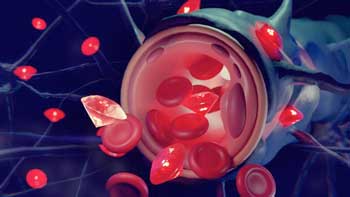 Scientists have investigated the suitability of a system based on nanodiamonds as diagnostic and therapeutic method for brain diseases.
Scientists have investigated the suitability of a system based on nanodiamonds as diagnostic and therapeutic method for brain diseases.
Simple synthesis of seeds for standardised carbon nanotubes
 Researchers have developed a method for assembling these complex molecules from a small number of segments.
Researchers have developed a method for assembling these complex molecules from a small number of segments.
Topological superconductivity studied in thin films
 A composite material reveals the relationship between superconductivity and exotic electronic states that could be useful in quantum computers.
A composite material reveals the relationship between superconductivity and exotic electronic states that could be useful in quantum computers.
Spin-to-electric charge conversion at an interface enables detection of spiraling light
 The interface between a metal and an oxide creates the right conditions for optically controlling electrons.
The interface between a metal and an oxide creates the right conditions for optically controlling electrons.
Thursday, August 29, 2019
Nanostructured material with potential for use in catalyzers
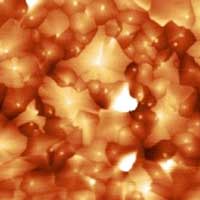 Researchers developed a titanium oxide nanofiber sheet through electrospinning and atomic layer deposition.
Researchers developed a titanium oxide nanofiber sheet through electrospinning and atomic layer deposition.
Researchers demonstrate first all-metamaterial optical gas sensor
 Researchers developed the first fully-integrated, non-dispersive infrared (NDIR) gas sensor enabled by specially engineered synthetic materials known as metamaterials. The sensor has no moving parts, requires little energy to operate and is among the smallest NDIR sensors ever created.
Researchers developed the first fully-integrated, non-dispersive infrared (NDIR) gas sensor enabled by specially engineered synthetic materials known as metamaterials. The sensor has no moving parts, requires little energy to operate and is among the smallest NDIR sensors ever created.
Smarter experiments for faster materials discovery
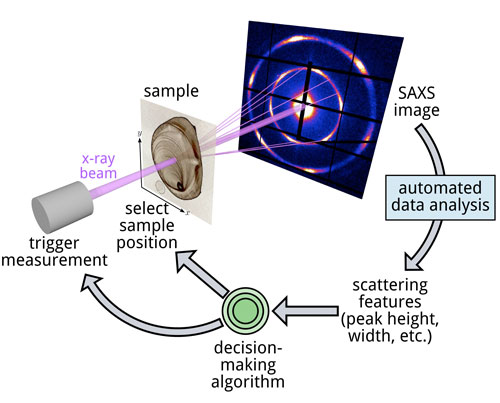 Scientists created a new AI algorithm for making measurement decisions; autonomous approach could revolutionize scientific experiments.
Scientists created a new AI algorithm for making measurement decisions; autonomous approach could revolutionize scientific experiments.
Directional plasmon excitation at molecular scales
 Scientists have developed a method for directional excitation of plasmons at molecular length scale with electrically driven sources.
Scientists have developed a method for directional excitation of plasmons at molecular length scale with electrically driven sources.
Atomically packed boundaries resist cracking
 Researchers used high energy X-rays to image the crack and also the grains inside a material in terms of size, shape, and position. Importantly, the new advances also determine the crystallographic orientation of the atomic arrangements in each grain.
Researchers used high energy X-rays to image the crack and also the grains inside a material in terms of size, shape, and position. Importantly, the new advances also determine the crystallographic orientation of the atomic arrangements in each grain.
Theory reveals the nature of crystals defects (of silicon carbide)
 Imperfections of crystal structure, especially edge dislocations of an elongated nature, deeply modify basic properties of the entire material and, in consequence, drastically limit its applications. Using silicon carbide as an example, physicists have shown that even such computationally demanding defects can be successfully examined with atomic accuracy by means of a cleverly constructed, small in size, model.
Imperfections of crystal structure, especially edge dislocations of an elongated nature, deeply modify basic properties of the entire material and, in consequence, drastically limit its applications. Using silicon carbide as an example, physicists have shown that even such computationally demanding defects can be successfully examined with atomic accuracy by means of a cleverly constructed, small in size, model.
Engineers build advanced microprocessor out of carbon nanotubes
 New approach harnesses the same fabrication processes used for silicon chips, offers key advance toward next-generation computers.
New approach harnesses the same fabrication processes used for silicon chips, offers key advance toward next-generation computers.
Nanostructured beetle scales hold secret to creating sustainable paint from recycled plastic
 The structure of ultra-white beetle scales could hold the key to making bright-white sustainable paint using recycled plastic waste, scientists have discovered.
The structure of ultra-white beetle scales could hold the key to making bright-white sustainable paint using recycled plastic waste, scientists have discovered.
Nanoparticles 'click' immune cells to make a deeper penetration into tumors
 Scientists reported a novel targeting strategy that allows deep tumor penetration of drug-loaded nanoparticles. They induced the linking of immune cell-targeting antibodies to drug-loaded nanoparticles on the cells, instead of taking them up in the cells or using antibody-nanoparticle conjugates.
Scientists reported a novel targeting strategy that allows deep tumor penetration of drug-loaded nanoparticles. They induced the linking of immune cell-targeting antibodies to drug-loaded nanoparticles on the cells, instead of taking them up in the cells or using antibody-nanoparticle conjugates.
Advances in carbon nanotechnology first steps in dramatic climate change mitigation
 A new study provides a several hundred-fold advance in stopping the release of the greenhouse gas carbon dioxide. This ground-breaking advance utilizes CO2 in producing carbon nanotubes which when, added to materials such as concrete or steel, forms composites with significantly better properties.
A new study provides a several hundred-fold advance in stopping the release of the greenhouse gas carbon dioxide. This ground-breaking advance utilizes CO2 in producing carbon nanotubes which when, added to materials such as concrete or steel, forms composites with significantly better properties.
Wednesday, August 28, 2019
End-run spreads lithium throughout battery electrodes
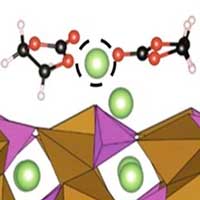 Scientists used chemical valence sensitive X-ray microscopy to measure the movement of lithium and the rate of phase separation in thousands of battery nanoparticles, in place and under operation, while in the battery chemical environment.
Scientists used chemical valence sensitive X-ray microscopy to measure the movement of lithium and the rate of phase separation in thousands of battery nanoparticles, in place and under operation, while in the battery chemical environment.
Artificial synapse mimics human memory
 Known as a second-order memristor, the new device is based on hafnium oxide and offers prospects for designing analog neurocomputers imitating the way a biological brain learns.
Known as a second-order memristor, the new device is based on hafnium oxide and offers prospects for designing analog neurocomputers imitating the way a biological brain learns.
New type of glass heals itself
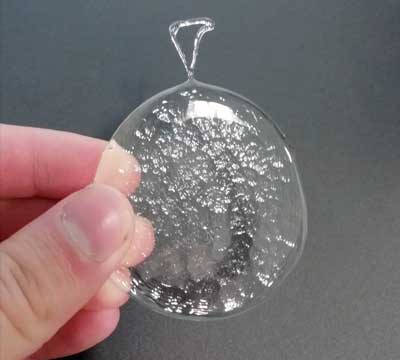 With the development of self-healing glass, cracks in smartphone screens, scratches on eyeglasses and chips in car windshields may soon be a thing of the past.
With the development of self-healing glass, cracks in smartphone screens, scratches on eyeglasses and chips in car windshields may soon be a thing of the past.
Energy-efficient power electronics - gallium oxide power transistors with record values
 Researchers have acjieved a breakthrough with transistors based on gallium oxide. The newly developed gallium oxide MOSFETs provide a high breakdown voltage combined with high current conductivity.
Researchers have acjieved a breakthrough with transistors based on gallium oxide. The newly developed gallium oxide MOSFETs provide a high breakdown voltage combined with high current conductivity.
Tuesday, August 27, 2019
Nanofiber webs remove toxic dye pollutants from wastewater
 Using specially created nanofiber webs allows sunlight to decay the dyes safely, inexpensively and easily.
Using specially created nanofiber webs allows sunlight to decay the dyes safely, inexpensively and easily.
Carbon nanotube breathalyzer can detect marijuana
 Researchers developed a breathalyzer device that can measure the amount of tetrahydrocannabinol (THC), the psychoactive compound in marijuana, in the user's breath.
Researchers developed a breathalyzer device that can measure the amount of tetrahydrocannabinol (THC), the psychoactive compound in marijuana, in the user's breath.
Scientists discover 'electron equivalents' in colloidal systems
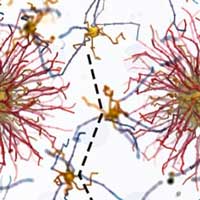 Scientists tethered smaller particles in colloidal crystals to larger ones using DNA, allowing them to determine how the smaller particles filled in the regions surrounding the larger ones.
Scientists tethered smaller particles in colloidal crystals to larger ones using DNA, allowing them to determine how the smaller particles filled in the regions surrounding the larger ones.
Gold nanoparticles shown to be safe and effective treatment for prostate cancer
 Bio-compatible gold nanoparticles designed to convert near-infrared light to heat have been shown to safely and effectively ablate low- to intermediate-grade tumors within the prostate.
Bio-compatible gold nanoparticles designed to convert near-infrared light to heat have been shown to safely and effectively ablate low- to intermediate-grade tumors within the prostate.
Laser printing graphene tech produces waterproof e-textiles in minutes
 The next generation of waterproof smart fabrics will be laser printed and made in minutes. That's the future imagined by the researchers behind new e-textile technology.
The next generation of waterproof smart fabrics will be laser printed and made in minutes. That's the future imagined by the researchers behind new e-textile technology.
Enhancing materials for hi-res patterning to advance microelectronics
 Researchers have created 'hybrid' organic-inorganic materials for transferring ultrasmall, high-aspect-ratio features into silicon for next-generation electronic devices.
Researchers have created 'hybrid' organic-inorganic materials for transferring ultrasmall, high-aspect-ratio features into silicon for next-generation electronic devices.
Nanoparticles could someday give humans built-in night vision
 Sscientists have used nanoparticles to confer a movie-like superpower on ordinary mice: the ability to see near-infrared light. They report progress in making versions of these nanoparticles that could someday give built-in night vision to humans.
Sscientists have used nanoparticles to confer a movie-like superpower on ordinary mice: the ability to see near-infrared light. They report progress in making versions of these nanoparticles that could someday give built-in night vision to humans.
Researchers discover unusual quasiparticle in common 2D material
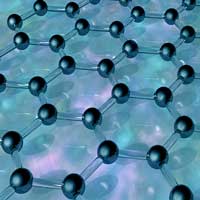 Scientists discovered a new quasiparticle named 'polaronic trion' in 2D material molybdenum disulphide. It could be used to design an optical modulator for visible light that is controlled by both temperature and electric fields.
Scientists discovered a new quasiparticle named 'polaronic trion' in 2D material molybdenum disulphide. It could be used to design an optical modulator for visible light that is controlled by both temperature and electric fields.
Biological risk potential of graphene quantum dots studied
 Researchers examined whether these particles are potentially dangerous for the organism and how cells cope with them once they have been incorporated.
Researchers examined whether these particles are potentially dangerous for the organism and how cells cope with them once they have been incorporated.
Monday, August 26, 2019
Graphene shield shows promise in blocking mosquito bites
 Project shows graphene could provide alternative to chemicals in insect repellant and protective clothing.
Project shows graphene could provide alternative to chemicals in insect repellant and protective clothing.
Excited atoms rush independently to new positions
 How atoms react to a sudden burst of light shows scientists how the larger material might act in sensors, data storage devices, and more. Knowing the disordered path of atoms as they shift into a new order lets scientists develop control schemes for the vibrational motion of atoms.
How atoms react to a sudden burst of light shows scientists how the larger material might act in sensors, data storage devices, and more. Knowing the disordered path of atoms as they shift into a new order lets scientists develop control schemes for the vibrational motion of atoms.
Sticker makes nanoscale light manipulation easier to manufacture
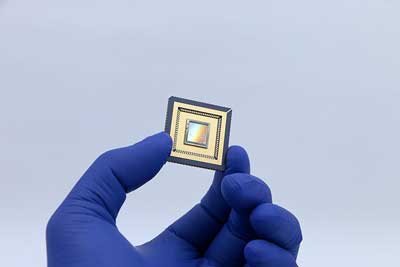 Researchers integrated light manipulation devices called 3D plasmonic nanoarrays onto peelable films that can stick to any surface. They tested the sticker-nanoarray?s capabilities on the lenses of sensors, which make up conventional imaging systems.
Researchers integrated light manipulation devices called 3D plasmonic nanoarrays onto peelable films that can stick to any surface. They tested the sticker-nanoarray?s capabilities on the lenses of sensors, which make up conventional imaging systems.
A 2 nm sized nanomachine able to spin and transfer its rotational energy
 Researchers have developed a new nanosized propeller which can act as gears. This propeller, when bound to a gold surface, can be activated through thermal, electrical or mechanical energy to spin unidirectionally either clockwise or counterclockwise. Its compatibility with solid state surfaces planar technology suggests this propeller can be used to build more efficient devices for electronics or mechanics applications.
Researchers have developed a new nanosized propeller which can act as gears. This propeller, when bound to a gold surface, can be activated through thermal, electrical or mechanical energy to spin unidirectionally either clockwise or counterclockwise. Its compatibility with solid state surfaces planar technology suggests this propeller can be used to build more efficient devices for electronics or mechanics applications.
Speeding up the hydrogen production by the magic topological surface states
 Topology may be the key to unlocking the barrier in the search for ideal catalysts for hydrogen production.
Topology may be the key to unlocking the barrier in the search for ideal catalysts for hydrogen production.
Much needed analysis reveals insights into high quality fabrication of nanocomposites
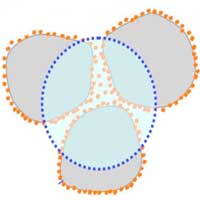 Scientists provide much needed analysis and review of the emerging research on particle reinforced metal matrix nanocomposites with selective laser melting, charting out possibilities for engineering applications.
Scientists provide much needed analysis and review of the emerging research on particle reinforced metal matrix nanocomposites with selective laser melting, charting out possibilities for engineering applications.
Sunday, August 25, 2019
Physicists' study demonstrates silicon's energy-harvesting power
 Thermoelectric nanoblades could reshape how circuits are cooled, provide better way for converting waste heat.
Thermoelectric nanoblades could reshape how circuits are cooled, provide better way for converting waste heat.
Friday, August 23, 2019
Save time using maths: Analytical tool designs corkscrew-shaped nano-antennae
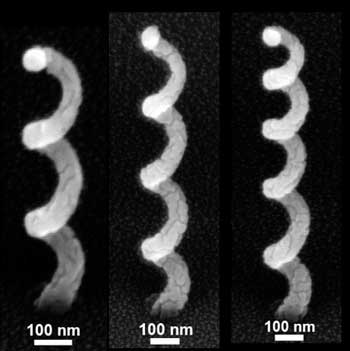 For the first time, scientists have derived analytically how corkscrew-shaped nano-antennas interact with light. The mathematical tool can be used to calculate the geometry that a nano-antenna must have for specific applications in sensor technology or information technology.
For the first time, scientists have derived analytically how corkscrew-shaped nano-antennas interact with light. The mathematical tool can be used to calculate the geometry that a nano-antenna must have for specific applications in sensor technology or information technology.
Study models new method to accelerate nanoparticles for tiny spacecraft
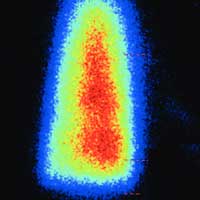 In a new study, researchers modeled a method to manipulate nanoparticles as an alternative mode of propulsion for tiny spacecraft that require very small levels of thrust.
In a new study, researchers modeled a method to manipulate nanoparticles as an alternative mode of propulsion for tiny spacecraft that require very small levels of thrust.
Researchers produce first-ever videos of chemical synthesis at atomic resolution
 For the first time, researchers have managed to view previously inaccessible details of certain chemical processes. They have shown there are significant discrete stages to these processes which build on our knowledge of chemical synthesis.
For the first time, researchers have managed to view previously inaccessible details of certain chemical processes. They have shown there are significant discrete stages to these processes which build on our knowledge of chemical synthesis.
Researchers observe spontaneous occurrence of skyrmions in atomically thin cobalt films
 Scientists show that individual magnetic skyrmions with a diameter of only a few nanometres can be stabilised in magnetic metal films even without an external magnetic field.
Scientists show that individual magnetic skyrmions with a diameter of only a few nanometres can be stabilised in magnetic metal films even without an external magnetic field.
A new method for quantifying crystal semiconductor efficiency
 Researchers used a specific kind of photoluminescence spectroscopy, a way to detect light, to characterize the semiconductors. The emitted light energy was used as an indicator of the crystal's quality.
Researchers used a specific kind of photoluminescence spectroscopy, a way to detect light, to characterize the semiconductors. The emitted light energy was used as an indicator of the crystal's quality.
Thursday, August 22, 2019
A simple method for the synthesis of atomically flat boron sheets
 Scientists find a simple method for producing atomically thin layers of oxidized borophene, a promising 2D boron-based nanomaterial that could serve in a variety of fields.
Scientists find a simple method for producing atomically thin layers of oxidized borophene, a promising 2D boron-based nanomaterial that could serve in a variety of fields.
Nano-thermometer takes temperature inside cells
 Chemists use fluorescence of molecular motors to sense conditions.
Chemists use fluorescence of molecular motors to sense conditions.
Creating textiles and cosmetics of the future with nanotechnology
 By using nanocapsules, scientists and industrial partners are developing innovative garments and skin products that provide thermal comfort, and anti-ageing and antimicrobial properties.
By using nanocapsules, scientists and industrial partners are developing innovative garments and skin products that provide thermal comfort, and anti-ageing and antimicrobial properties.
Structure of protein nano turbine revealed
 Scientists determine the first structure of a cell's rotary engine using state-of-art microscopy.
Scientists determine the first structure of a cell's rotary engine using state-of-art microscopy.
New study reveals carbon nanotubes measurement possible for the first time
 Experiments yield conductivity measurements between two identical carbon nanotubes.
Experiments yield conductivity measurements between two identical carbon nanotubes.
Mapping nucleation kinetics with nanometer resolution
 Scientists discovered a new imaging method - nanoscale nucleation kinetic mapping - which allows direct imaging of nucleation events at a solid-liquid interface.
Scientists discovered a new imaging method - nanoscale nucleation kinetic mapping - which allows direct imaging of nucleation events at a solid-liquid interface.
Artificial muscles bloom, dance, and wave
 Wearing a flower brooch that blooms before your eyes sounds like magic. Researchers have made it real with MXenes and robotic muscles.
Wearing a flower brooch that blooms before your eyes sounds like magic. Researchers have made it real with MXenes and robotic muscles.
Subscribe to:
Posts (Atom)
